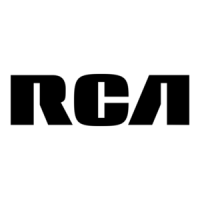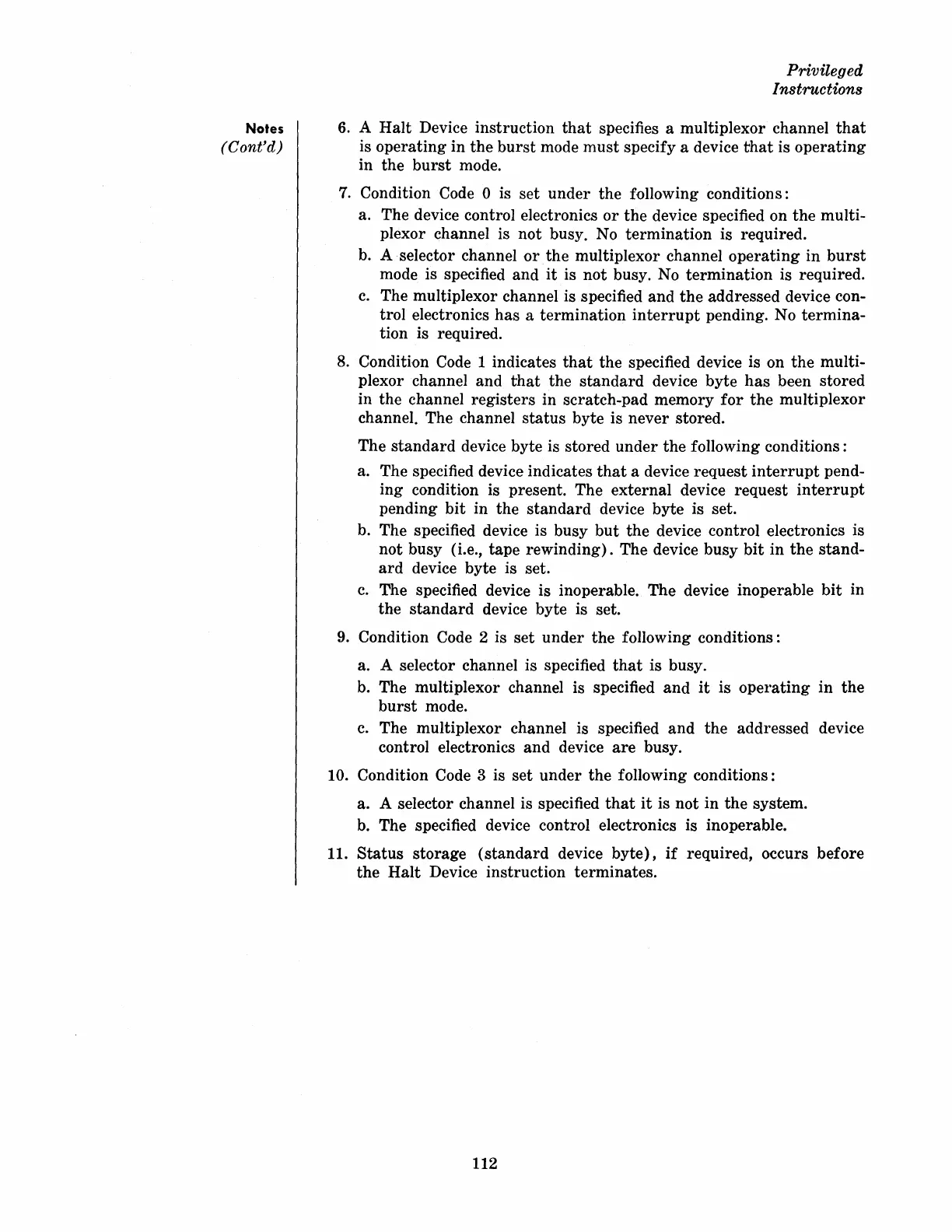Notes
(Cont'd)
Privileged
Instructions
6.
A
Halt
Device instruction
that
specifies a multiplexor channel
that
is operating in
the
burst
mode
must
specify a device
that
is
operating
in
the
burst
mode.
7.
Condition Code 0 is
set
under
the following conditions:
a. The device control electronics
or
the
device specified on
the
multi-
plexor channel is not busy. No termination is required.
b.
A selector channel
or.
the multiplexor channel
operating
in
burst
mode is specified
and
it
is
not
busy. No
termination
is required.
c.
The multiplexor channel is specified and
the
addressed device con-
trol electronics
has
a termination
interrupt
pending. No
termina-
tion is required.
8. Condition Code 1 indicates
that
the specified device is on
the
multi-
plexor channel
and
that
the
standard
device byte
has
been stored
in the channel registers in scratch-pad memory
for
the
multiplexor
channel. The channel
status
byte is never stored.
The
standard
device byte is stored
under
the following conditions:
a. The specified device indicates
that
a device request
interrupt
pend-
ing condition is present. The external device request
interrupt
pending
bit
in
the
standard
device byte is set.
b. The specified device is busy
but
the
device control electronics is
not
busy (i.e.,
tape
rewinding).
The device busy
bit
in
the
stand-
ard
device byte is set.
c.
The specified device is inoperable. The device inoperable
bit
in
the
standard
device byte is set.
9.
Condition Code 2 is set under
the
following conditions:
a. A selector channel is specified
that
is busy.
b. The mUltiplexor channel is specified
and
it
is
operating
in
the
burst
mode.
c.
The multiplexor channel is specified
and
the addressed device
control electronics
and
device
are
busy.
10. Condition Code 3 is
set
under
the
following conditions:
a. A selector channel is specified
that
it
is not
in
the
system.
b.
The specified device control electronics is inoperable.
11.
Status
storage
(standard
device
byte),
if
required, occurs before
the
Halt
Device instruction terminates.
112

